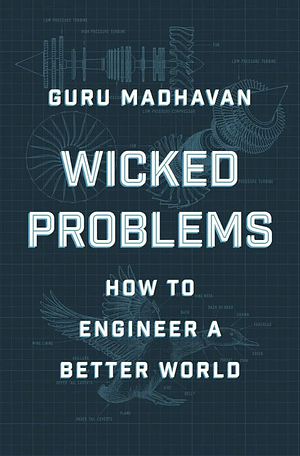Both/And Thinking - Vicious Cycles (Chapter 2)
I’ve started reading Both/And Thinking and am capturing my thoughts here as I go. Right now these are mostly the raw notes as synthesis comes later. You may find it interesting to start with the first post in this series or to read them all.
Today’s reading started (and finished) a chapter on the cycles we can get caught in trying to deal with paradoxes. The story about LEGO that drives the chapter is fascinating and Marianne Lewis’ personal journal resonated some with me directly.
The chapter began by talking about Either/or thinking is potentially very dangerous. In my own work and in others I often see the feeling that one must commit to either what you are doing or to innovating a new future. “[H]olding too tightly to current successes without simultaneously innovating means that when the future becomes the present, the organization is stuck in the past.”
The authors present a variant on “sunk cost fallacy” that I hadn’t seen before:
We also feel anxious when we are inconsistent Therefore we try to align our decisions with our previous commitments. Over time, however, our repeated commitments to a particular course of action intensify. Once we start down a particular path, we tend to want to stay on that path, which results in our becoming stuck.
There is an aside that uses Robert Frost’s poem, “The Road Not Taken” to illustrate that the problem is usually not either/or. Instead, the problem may be that “we are too narrow in how we frame the problem? We see two roads and think that those are our only options, rather than diving deeper, asking why we feel forced to make that choice to begin with.”
Ruts
We can all get stuck in ruts. Charles Handy has built an S curve model to describe the trajectory we often follow.
Progress starts slowly. Performance improves with time, thanks to trial and error, hard work, and focused investments. Gradually and then more rapidly, we develop strengths and the confidence to achieve mastery. The upward trajectory feels exhilarating. As performance improves, learning quickens, and acclaim builds. That rising curve of progress, however, eventually stagnates, flattening and turning downward. We sometimes believe we can avoid this downturn, but it is inevitable—and the downward slope is slippery! As our strengths grow and related challenges decrease, so comes complacency, rigidity, and even arrogance. We start to miss changes in the external environment or weaknesses in internal competencies. New problems come up, and we lack the tools to address them. (highlight mine)
To avoid this, we have to start the next new thing while we are still in the rising phase of continuing improvement. The trick is to start when we can begin to shift some focus and try to get it to be rising about the time we hit the peak. If we wait until we see the peak, it is likely too late.
The most successful organizations start to oversimply processes; become proud, insular, and immune to feedback; and lack the motivation or resources to change.
The way to do this is to always assume you are on the cusp of heading up to the peak and to “constantly scan the horizon for the next curve, even while enjoying your current success.”
Cognitive Traps
The more skilled and comfortable we become with our way of thinking, the more we take for granted our existing assumptions, our mental limits, and our biases. We become committed to a way of viewing the world and defensive when those views are challenged. This defensiveness, in turn, reinforces our existing assumptions.
This manifests as us questioning the knowledge of others when we are challenged and seeking to clarify our work to help them understand it. Instead, “we need to reframe the problem, moving to higher-order thinking to consider both/and alternatives. Yet we are more likely to try to rationalize, seeking to make sense of the conflict using what we already know well. We try to create the familiar out of the strange, using past approaches to resolve the tension and move on.”
This results in us staying with our current ideas and narrowing our thoughts. If we make slight modifications we are likely to only reinforce our own thinking. This prevents us from learning, expanding, and adapting.
Non-ironically, I’ll note that I feel reinforced in some of my thinking by this next comment:
Ironically, leaders’ biases are reinforced by their loyal customers. Christensen found that when asked what they wanted in new products, long-standing customers consistently called for less expensive, enhanced versions of past innovations.
I believe it is possible to begin to over-rotate to serving your existing customers without realizing that the market has grown drastically with new customers who have different but related needs.
Behavioral Traps
We are creatures of habit and we tend to want to reproduce our existing routines.
Over time, our superpowers—such as LEGO’s quality control and shared values—become our kryptonite, limiting bolder innovation and more critical self-examination in times of change.
This is termed “‘escalating commitment’, a bias in favor of our previous decisions and existing mindsets.”
This leads to a risk of overcorrection where we try to break out of rut by swinging so hard in the other direction that we merely begin a new rut.
The LEGO story really spoke to this section.
Their innovation strategy had little discipline and became a wrecking ball that intensified complexity and chaos. Whereas it once took nearly a decade for LEGO to introduce the color green, within a few years the toy maker started making parts in 157 different colors.
A Better Way
There has to be a better way forward. Here the authors summarized a bit of the thinking and printed the eleven paradoxes LEGO hung on their wall in the 1980s. These were reinforced in the form of encouraging leaders to take a “bifocal perspective.”
The paradoxes are interesting enough on their own that I reproduce them here:
- To be able to build a close relationship with one’s staff, and to keep a suitable distance.
- To be able to lead, and to hold oneself in the background.
- To trust one’s staff, and to keep an eye on what is happening.
- To be tolerant, and to know how you want things to function.
- To keep the goals of one’s department in mind, and at the same time to be loyal to the whole firm.
- To do a good job of planning your own time, and to be flexible with your schedule.
- To freely express your view, and to be diplomatic.
- To be a visionary, and to keep one’s feet on the ground.
- To try to win consensus, and to be able to cut through.
- To be dynamic, and to be reflective.
- To be sure of yourself, and to be humble.
Chapter Takeaways
For completeness and my future reference, the authors suggest these takeaways
- Either/or thinking is limiting at best, detrimental at worst. Stressing only one side of a paradox oversimplifies and narrows our options and can trigger vicious cycles.
- The ways we tend to think (cognition), feel (emotions), and act (behaviors) are self-reinforcing, intensifying our favored side. The S curve illustrates how the initial benefits of intensification can turn negative in time as we overplay our strengths.
- Three patterns lead to vicious cycles when navigating paradoxes: rabbit holes (intensification), wrecking balls (overcorrection), and trench warfare (polarization). Always beware of mindsets, emotional states, and behaviors that spur these patterns.
- Rabbit holes: Our favored and overused ways of responding to tensions keep us stuck in a rut. Overplaying our strengths hinders our ability to learn, grow, and change, even when we most need to expand our capabilities, understandings, and options (to move to a new S curve).
- Wrecking balls: Intense pressure from a long-neglected side of a paradox can highlight our current ruts and trigger overcorrection. We swing the pendulum too far to the opposing side, a practice that leads us to descend rapidly down a new rabbit hole or to ping-pong erratically between opposing forces.
- Trench warfare: When groups stress opposing sides of a paradox, polarization can lead them to dig in, deepening each rut as they vehemently defend their position. Intractable conflict develops as each side becomes more simplified, reactionary, and insular in its stance.
Note: Today is likely the last entry for a week or so while I take some personal time. Also, on a meta-note, I had to read in a different place than usual today and the impact on my note taking was noticeable. I’ll want to keep an eye on this and understand it.



